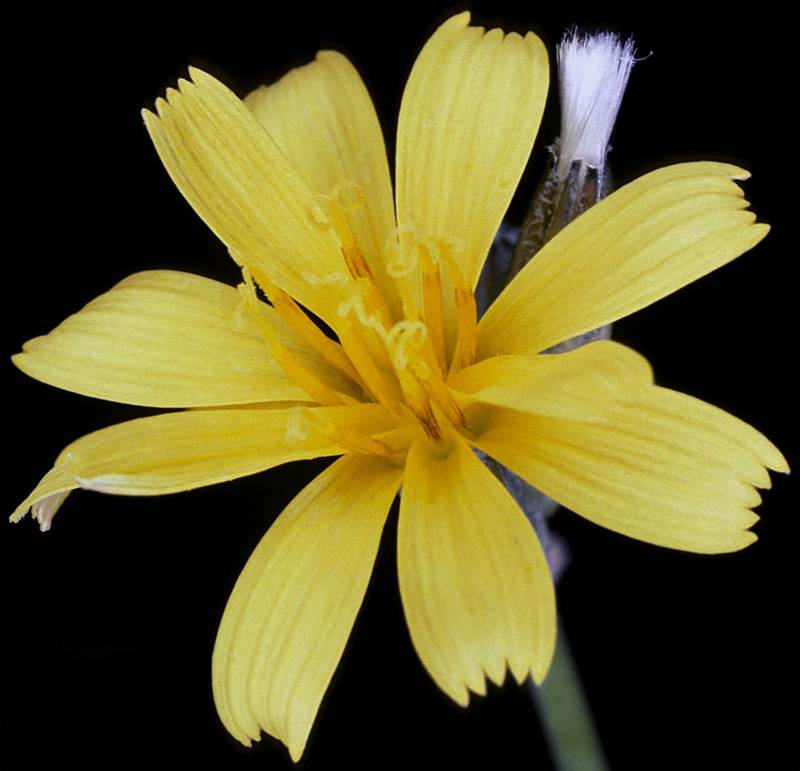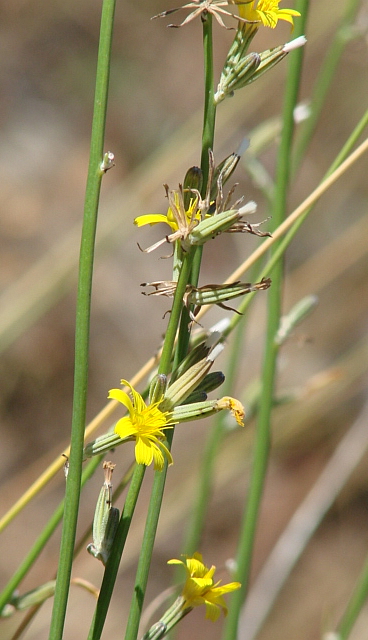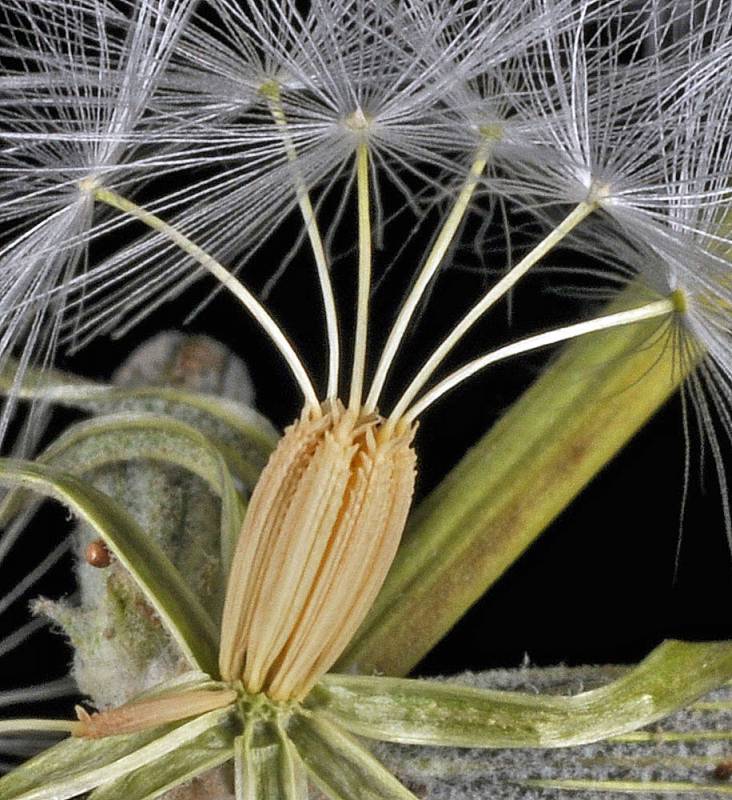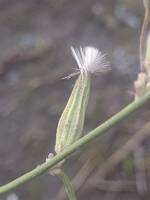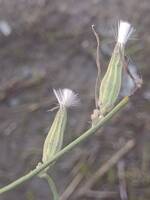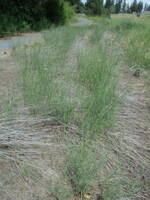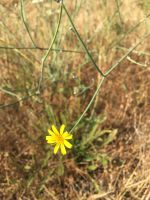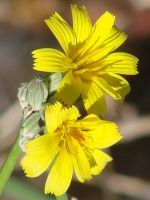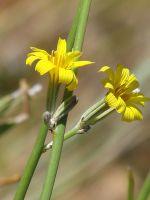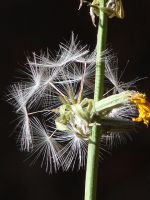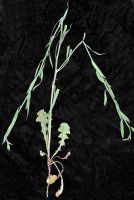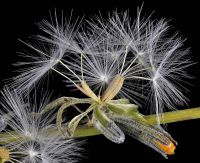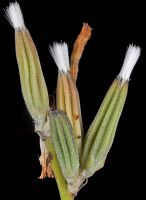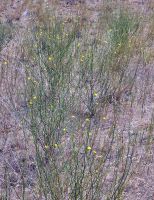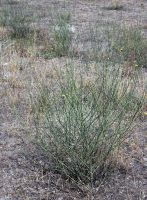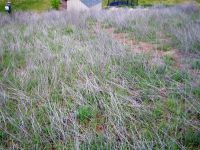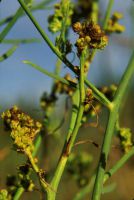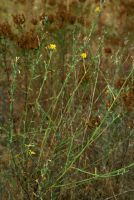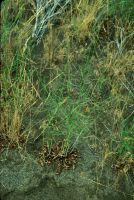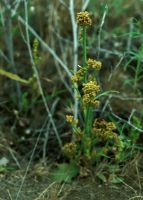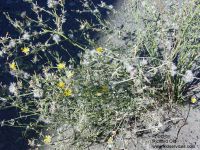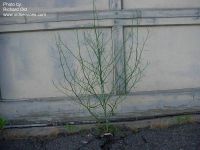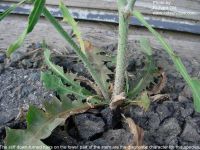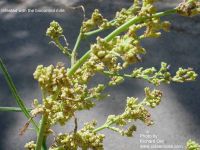Distribution: Occurring chiefly east of the Cascades crest in Washington; British Columbia to California, east to Montana; also occurring in eastern North America.
Habitat: Roadsides, fields, sagebrush desert, wastelots, and other disturbed, open areas at low to middle elevations.
Flowers: July-September
Origin: Introduced from Eurasia
Growth Duration: Perennial
Conservation Status: Not of concern
Pollination: Bees, flies, beetles, wasps
Rush-like, tap-rooted perennial, 3-15 dm. tall, with milky juice.
Basal leaves in a rosette, pinnatifid, with backward-pointing segments, 5-13 cm. long and 1.5-3.5 cm. wide, often deciduous; cauline leaves linear, scattered, 2-10 cm. long and 1-8 mm. wide, white-woolly.
Heads scattered on branches; flowers all ligulate and perfect, yellow, 7-15 in a head; involucre cylindric, with a single row of sub-equal long bracts and a second row of short bracts; pappus of numerous, white capillary bristles.
Achenes several-ribbed, smooth below, with tiny, scaly projections above, terminated by soft, white bristles.
Publication: Sp. Pl. 2: 796. 1753.
PNW Herbaria: Specimen records of Chondrilla juncea in the Consortium of Pacific Northwest Herbaria database.
WA Flora Checklist: Chondrilla juncea checklist entry.
OregonFlora: Chondrilla juncea information.
E-Flora BC: Chondrilla juncea atlas page.
CalPhotos: Chondrilla juncea photos.
USDA Plants: Chondrilla juncea information.

